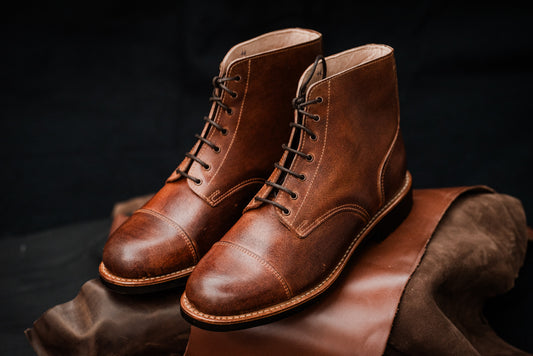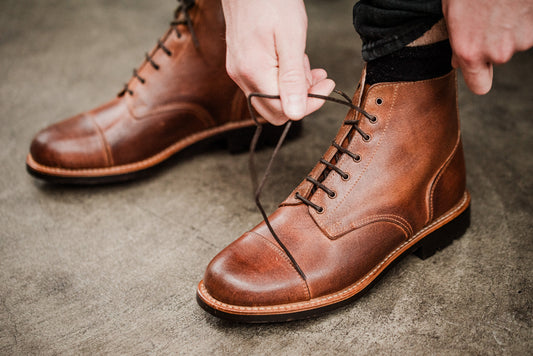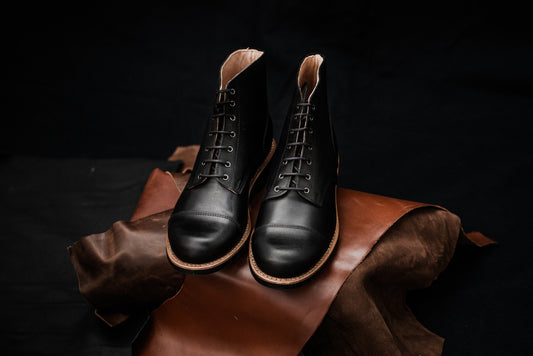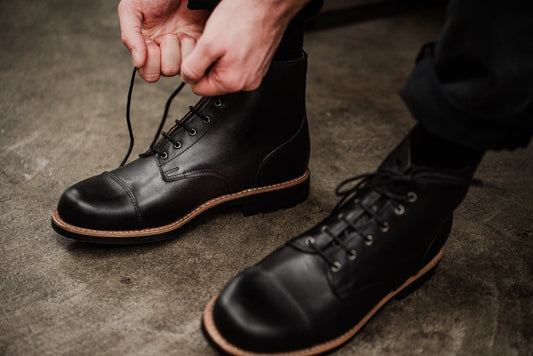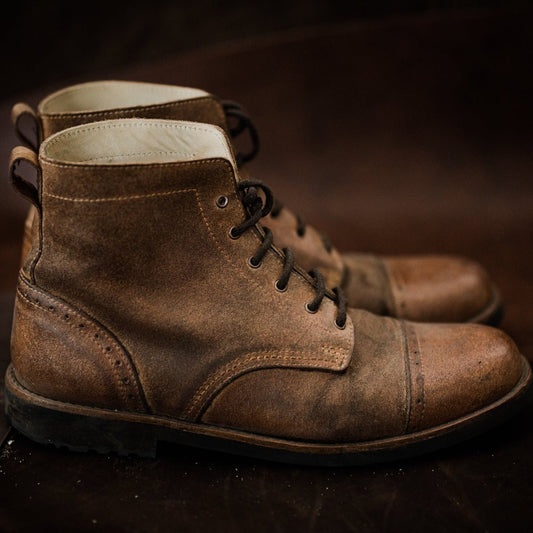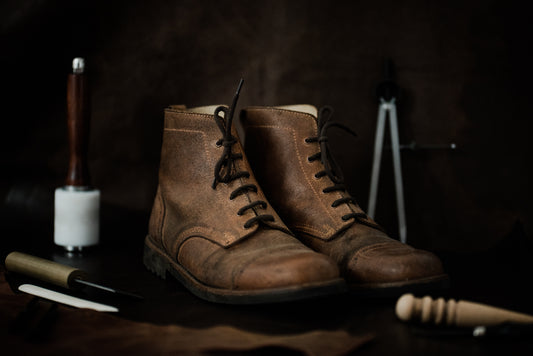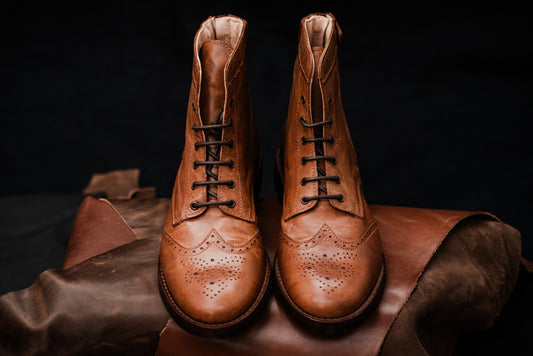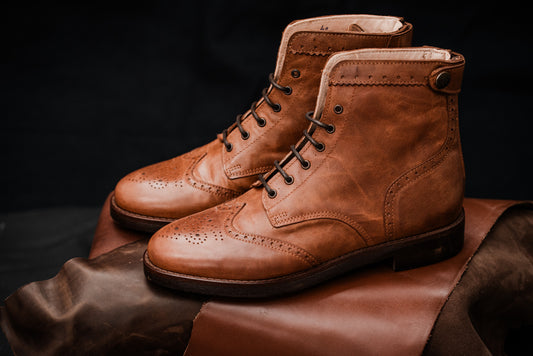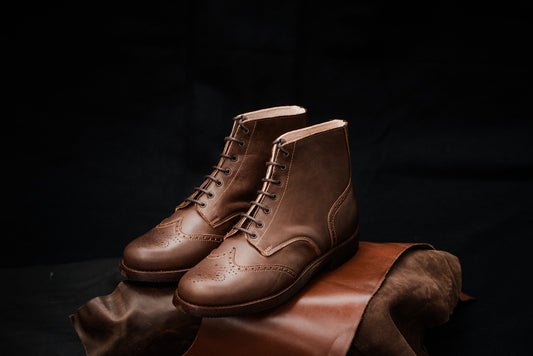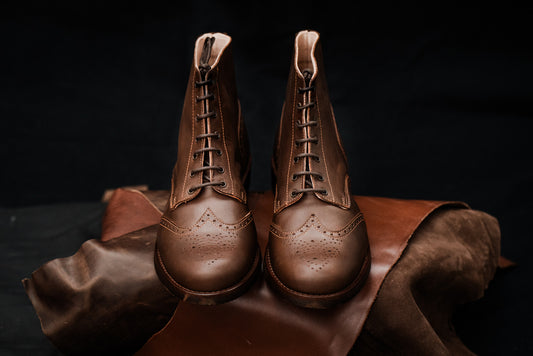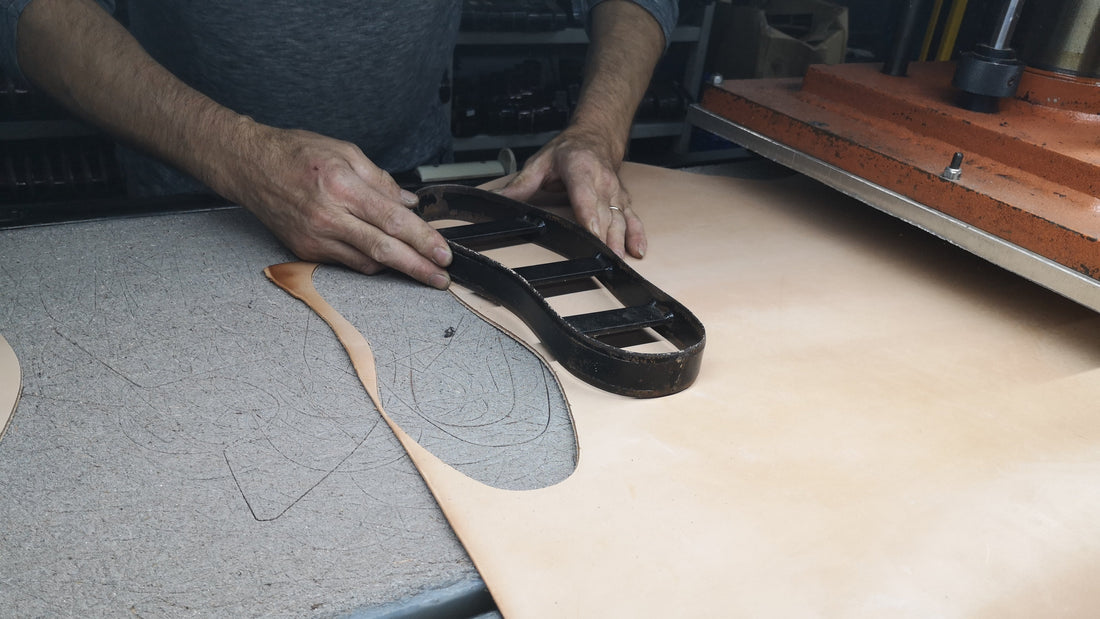
Sustainable Craftsmanship: The Art of Eco-Friendly Handmade Boots
Share
In an era of fast fashion and mass-produced footwear, handmade boots stand out not only for their quality and durability but also for their potential to be more sustainable. As consumers become increasingly aware of environmental issues, the demand for ethically made, eco-conscious footwear is growing.
At OldMulla, we believe that true craftsmanship goes hand in hand with sustainability. In this post, we’ll explore how handmade boots can be made responsibly, from material sourcing to production techniques, and why choosing artisanal footwear is a step toward a greener future.
1. The Environmental Impact of Mass-Produced Footwear
Before diving into sustainable bootmaking, it’s important to understand the problems with conventional footwear production:
-
Excessive Waste: Fast fashion brands discard tons of unsold shoes annually, contributing to landfill pollution.
-
Chemical Pollution: Many factories use toxic dyes, adhesives, and synthetic materials that harm ecosystems.
-
Carbon Footprint: Large-scale production and global shipping increase CO₂ emissions.
-
Poor Labor Conditions: Many workers in the footwear industry face unfair wages and unsafe conditions.
Handmade boots offer an alternative—slower, more intentional production with a focus on quality and ethics.
2. Sustainable Materials for Handmade Boots
The foundation of eco-friendly boots lies in material selection. Here are some of the best sustainable options:
A. Ethically Sourced Leather
-
Vegetable-Tanned Leather: Unlike chrome tanning (which uses harmful chemicals), vegetable tanning relies on natural tannins from tree bark, making it biodegradable.
-
Upcycled & Reclaimed Leather: Some artisans use leftover leather from larger manufacturers, reducing waste.
-
Certified Leather: Look for leather certified by the Leather Working Group (LWG), which ensures responsible sourcing.
B. Alternative & Vegan Materials
For those who prefer non-leather options:
-
Piñatex (Pineapple Leather): Made from pineapple leaf fibers, a byproduct of agriculture.
-
Mushroom Leather (Mycelium): A biodegradable, lab-grown material with a leather-like texture.
-
Cork & Natural Rubber: Sustainable, renewable, and durable for soles and accents.
C. Natural & Recycled Linings
-
Organic Cotton & Hemp: Breathable, pesticide-free, and biodegradable.
-
Wool from Ethical Farms: Renewable and temperature-regulating.
-
Recycled Fabrics: Some brands use repurposed textiles for boot linings.
3. Eco-Conscious Production Techniques
Handmade bootmakers can minimize environmental harm through mindful production methods:
A. Low-Waste Pattern Cutting
-
Artisans carefully plan cuts to maximize material use, reducing scraps.
-
Leftover leather can be repurposed for small accessories (keychains, patches).
B. Non-Toxic Adhesives & Dyes
-
Water-based glues and natural dyes avoid harmful chemicals.
-
Some makers use beeswax or plant-based oils for waterproofing instead of synthetic sprays.
C. Energy-Efficient Workshops
-
Small-scale production consumes less energy than factories.
-
Some workshops use solar power or energy-efficient tools.
D. Hand-Stitching vs. Machine Reliance
-
Hand-stitching reduces electricity use and increases durability (no weak glue seams).
-
Traditional techniques like Goodyear welting allow for resoling, extending boot life.
4. Longevity & Repairability: The Ultimate Sustainability
The most sustainable shoe is the one that lasts decades. Handmade boots excel in:
-
Reinforced Construction: Double-stitching, sturdy soles, and quality materials prevent premature wear.
-
Resoling & Refurbishing: Unlike glued shoes, well-made boots can be resoled multiple times.
-
Timeless Design: Classic styles avoid trends, ensuring they stay wearable for years.
Pro Tip: Educate customers on boot care—regular conditioning, proper storage, and timely repairs can double a boot’s lifespan.
5. Ethical Labor & Fair Trade Practices
Sustainability isn’t just about materials—it’s also about people. Ethical bootmaking involves:
-
Fair Wages: Artisans should earn livable incomes for their skilled work.
-
Safe Working Conditions: Small workshops often provide better environments than sweatshops.
-
Preserving Traditional Craftsmanship: Supporting handmade boots helps keep artisan skills alive.
6. How Consumers Can Support Sustainable Bootmaking
Buying handmade is a great start, but here’s how customers can make an even bigger impact:
-
Choose Quality Over Quantity: Invest in one great pair instead of multiple cheap ones.
-
Research Brands: Look for transparency in sourcing and production.
-
Recycle Old Boots: Some brands offer take-back programs for recycling.
-
Support Local Artisans: Reduces shipping emissions and boosts small businesses.
Conclusion: Walking Toward a Greener Future
Handmade boots represent more than just footwear—they embody a commitment to sustainability, ethics, and craftsmanship. By choosing eco-friendly materials, minimizing waste, and valuing longevity, small-scale bootmakers can lead the way in responsible fashion.
At OldMulla, we take pride in every stitch, ensuring our boots are as kind to the planet as they are to your feet. Join us in stepping toward a more sustainable future—one pair of boots at a time.
-
Share your thoughts in the comments: How do you prioritize sustainability in your footwear choices?






